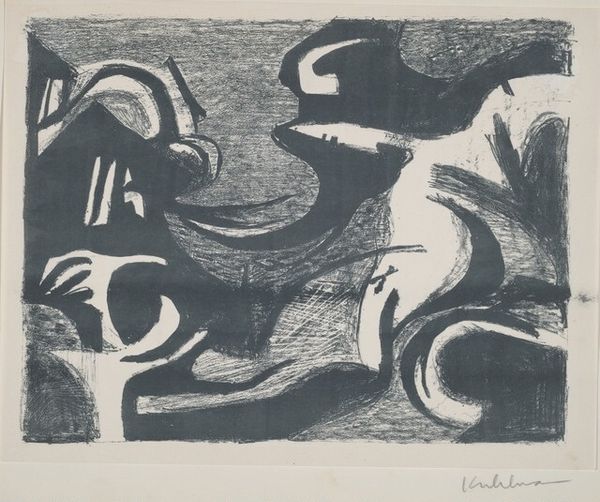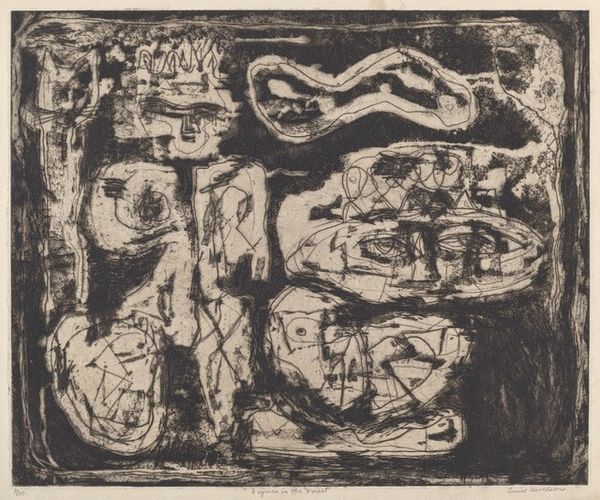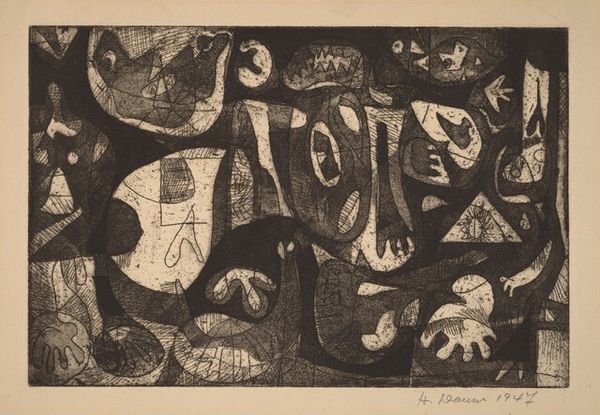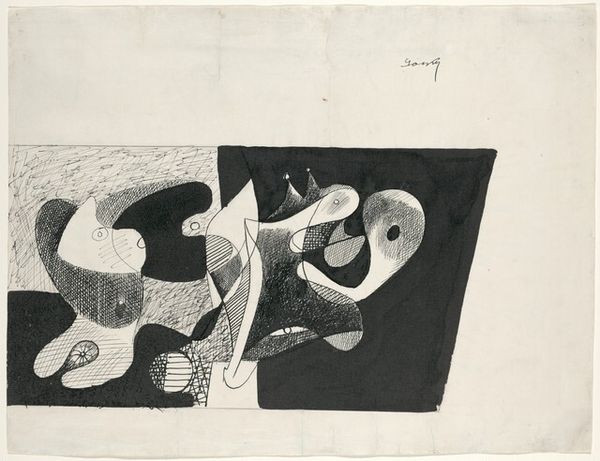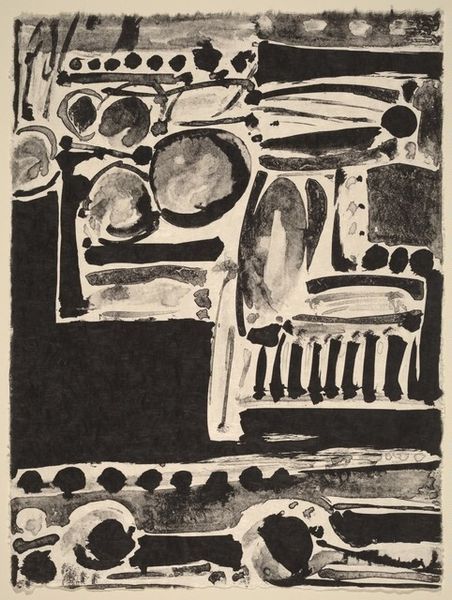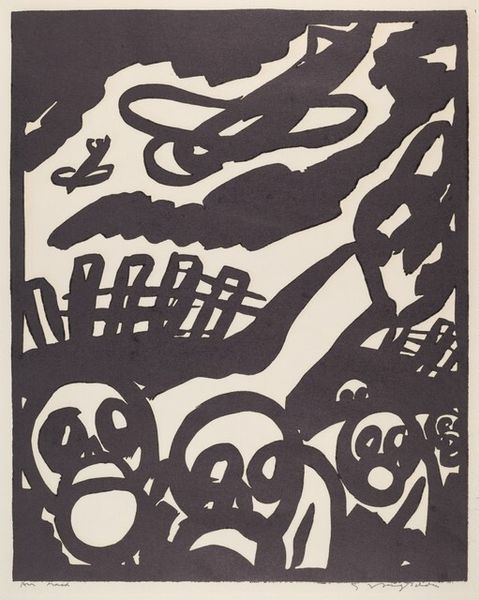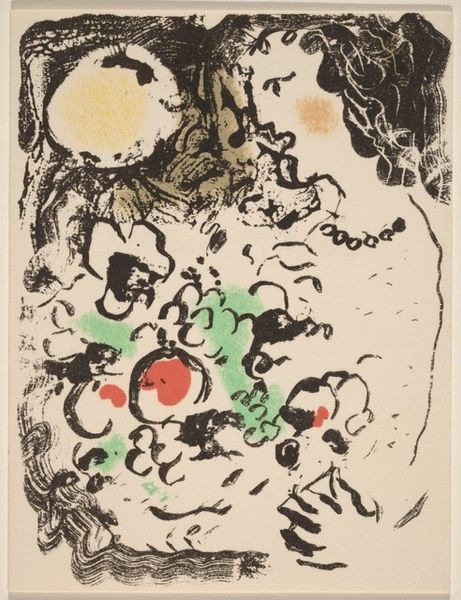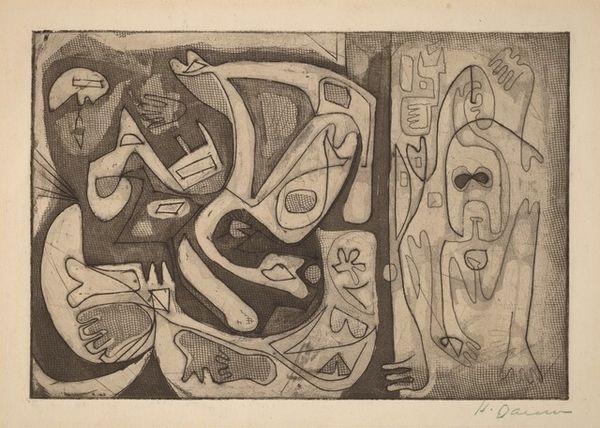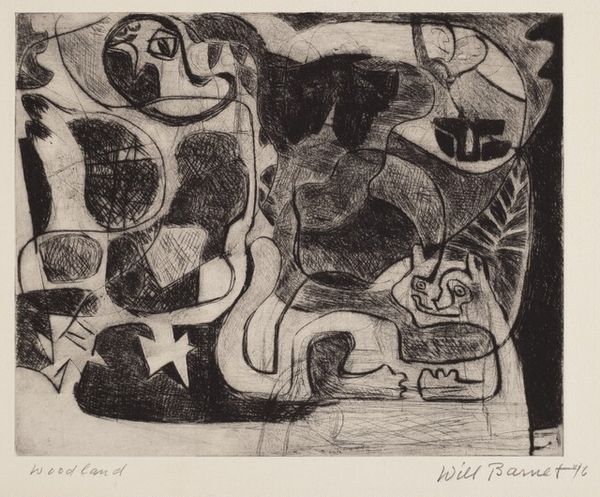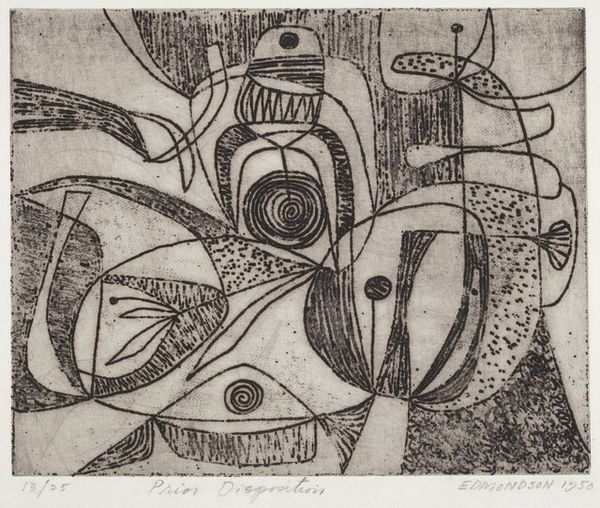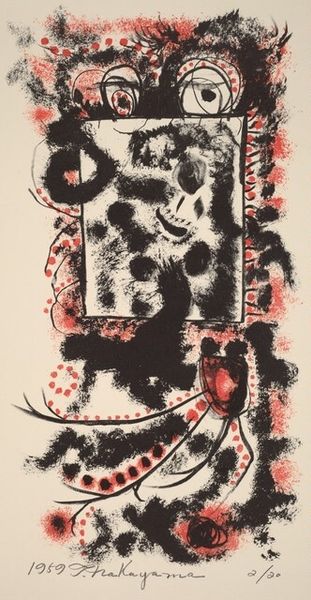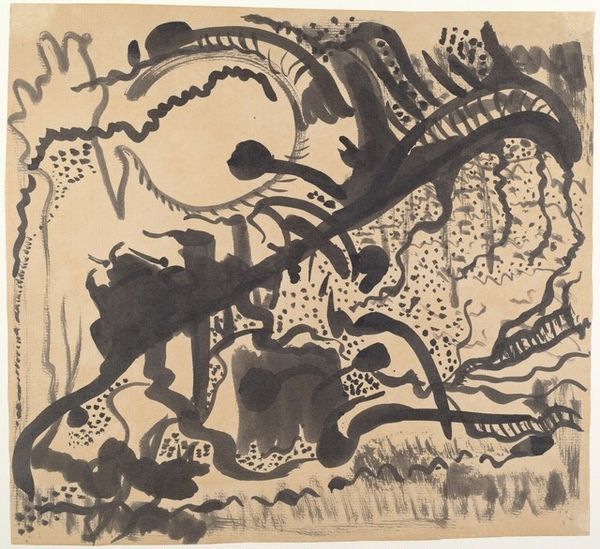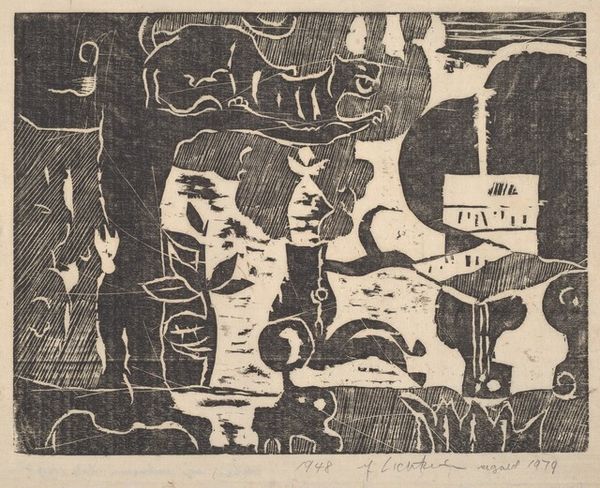
drawing, ink
#
abstract-expressionism
#
drawing
#
non-objective-art
#
ink
#
geometric
#
abstraction
Dimensions: image: 34.29 × 53.66 cm (13 1/2 × 21 1/8 in.) sheet: 47.63 × 60.64 cm (18 3/4 × 23 7/8 in.)
Copyright: National Gallery of Art: CC0 1.0
Editor: So, this is Emil Bisttram’s "Untitled," an ink drawing from around 1950. It's interesting, kind of chaotic in its composition, with these abstract, dark shapes floating against a lighter background. What do you see in this piece? Curator: Well, the prevalence of eye-like motifs is immediately striking. Notice the emphasis on sight, not just literal seeing, but perhaps insight, even surveillance. The forms remind me of ancient glyphs and symbols, hinting at a cultural memory embedded within the abstract forms. Editor: Cultural memory? That’s intriguing. The forms almost look organic, like cells under a microscope, or even microscopic organisms. Is that a common element of Abstract Expressionism? Curator: It is one possible association. Bisttram, like many Abstract Expressionists, was deeply interested in accessing a universal unconscious. These forms, even in their abstraction, evoke primal shapes and patterns. The high contrast—stark black ink on a muted ground—also amplifies the emotional weight. Are these watchful eyes benevolent or menacing, do you think? Editor: I’m not sure, to be honest. There's something unsettling about them, but also…captivating. It makes you want to decipher a hidden message. So you see this drawing as kind of a modern-day codex? Curator: Perhaps. Bisttram used abstraction to tap into something deeper than representational imagery could offer. He uses symbolic language to hint at something beneath the surface, a collective, ancestral narrative perhaps. What do you make of the composition itself? Does it feel balanced to you? Editor: Not particularly, no. There’s definitely a heavier concentration of shapes on the left side. Curator: Exactly, that imbalance draws attention to the act of interpretation itself. We’re forced to actively construct meaning rather than passively receiving it. It uses symbolism, and composition to challenge the viewer. Editor: I never thought about abstract art having its own language of symbols. Curator: And it's a language constantly being reinterpreted, evolving with the viewers. Each person brings their experiences. Editor: That's a really different perspective than how I usually think about abstract art. I appreciate that!
Comments
No comments
Be the first to comment and join the conversation on the ultimate creative platform.
